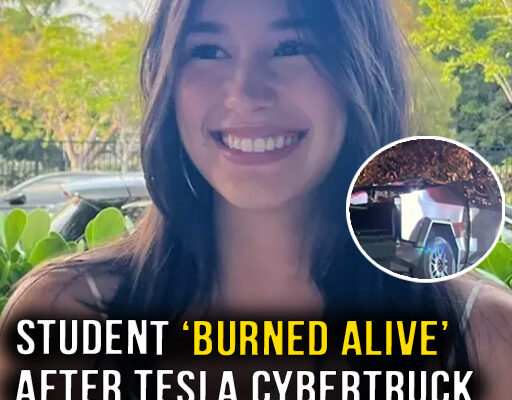Tragedy, Technology, and Accountability: The Case of the Tesla Cybertruck Fire
A devastating crash in California has reignited questions about safety in modern vehicles after a 19-year-old college student, Krysta Tsukahara, died trapped inside a burning Tesla Cybertruck that had turned into what her family calls a “steel cage.” Two of her friends also lost their lives in the accident.
A Night of Loss
On November 27, 2024, four friends — all recent graduates of Piedmont High School — were driving home for Thanksgiving break when their Tesla Cybertruck struck a retaining wall and caught fire.
The crash killed driver Soren Dixon, 19; passenger Jack Nelson, 20; and Krysta Tsukahara, 19. Only one passenger, Jordan Miller, survived after a friend following behind broke the glass with a tree branch to pull him out moments before flames consumed the truck.
Police confirmed that the vehicle was fully engulfed by the time first responders arrived.
Toxicology reports later revealed that Dixon had both methamphetamine and cocaine in his system, along with a blood-alcohol concentration more than twice the legal limit. Both Tsukahara and Nelson also tested positive for alcohol and traces of cocaine — a detail that, while tragic, does not lessen the questions now being asked about the car’s design and safety mechanisms.
“She Couldn’t Get Out”
According to a wrongful-death lawsuit filed by Krysta’s parents, their daughter initially survived the crash with minor injuries but was unable to escape the locked car as smoke and heat intensified.
The filing claims that the Cybertruck’s electrical system failed, disabling the powered doors and trapping her inside. While Tesla vehicles are equipped with a manual door release, the lawsuit argues that it is poorly placed and hard to find during emergencies.
“Krysta tried to get out through the passenger window while a friend outside was attempting to break the glass,” the lawsuit states. “The electrical failure prevented the doors from opening. She was then forced back by the flames and died from smoke inhalation and burns.”
Her family’s attorney, Roger Dreyer, said:
“This was a preventable death. Tesla knew the risks of an electronic-only door system yet failed to make the manual override accessible when seconds mattered most.”
Grieving Families Seek Answers
Both the Tsukahara and Nelson families have filed suits against Tesla and the estate of Charles Patterson, the vehicle’s owner and a relative of the driver.
The suits accuse Tesla of “conscious disregard for consumer safety,” alleging that the company was aware of door-release failures in prior incidents but continued to sell vehicles with similar systems.
Krysta’s father, Carl Tsukahara, said in a statement:
“Krysta was a bright, kind, and creative young woman with her whole life ahead of her. What we cannot accept is the silence surrounding how she died — why a trillion-dollar company could release a machine that traps its occupants in a fire.”
The Nelson family’s complaint adds that rear passengers were left with only a concealed mechanical release — “nonintuitive and nearly impossible to find in the smoke and chaos of a burning vehicle.”
Both families are seeking punitive damages, saying this case is about accountability and the hope of preventing future loss of life.
Impaired Driving and Shared Responsibility
Authorities determined that speeding and impaired driving played a major role in the crash.
Still, attorneys for the victims’ families say that does not absolve Tesla of responsibility.
“Tesla will point to driver behavior,” Dreyer said, “but a vehicle should not become a coffin because of a power failure. Accountability has to exist at every level.”
A Broader Debate on Safety
Tesla’s Cybertruck, launched in late 2023 with enormous fanfare, has since faced multiple recalls and growing scrutiny over safety and quality-control issues.
Critics argue that in the race toward technological innovation, the most human elements of design — accessibility, instinctive emergency mechanisms, and survivability — are too often overlooked.
Automotive experts note that as vehicles become more digital, redundant manual systems become not just conveniences but potential life-saving necessities.
Reflection: When Innovation Forgets Humanity
Every breakthrough carries moral weight. Technology that moves faster than compassion or caution risks betraying its purpose — to serve life, not endanger it.
Behind the legal filings and engineering debates lies a human truth: three young people are gone, and one family is left asking why a car so advanced could fail so simply when it mattered most.
As investigations continue, the hope is not only for justice but for humility in innovation — a reminder that even in the age of self-driving technology, the sacred duty to protect human life remains profoundly manual.
(May Krysta Tsukahara, Jack Nelson, and Soren Dixon rest in peace, and may their loss become a catalyst for safer, more mindful engineering.)



